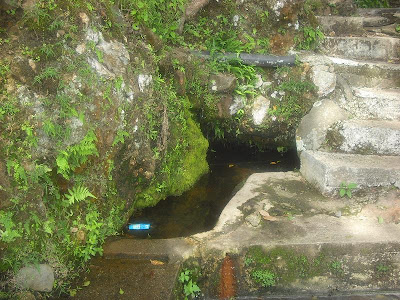Please give due credit to the author. Do not copy-paste.
by: Felisa Daskeo
The first settlers of Tadian, Mt. Province came from a place called Dallikan, a place in Cervantes, Ilocos Sur, a province in the northern part of the Philippines.
by: Felisa Daskeo
The first settlers of Tadian, Mt. Province came from a place called Dallikan, a place in Cervantes, Ilocos Sur, a province in the northern part of the Philippines.
The story goes that Pagawad, Dallikan’s powerful leader, became abusive as a leader which led to his death. The incident happened when a tribal war ensued and his own people abandoned him to be killed by their tribal enemies.
Pagawad’s death led most of the settlers to abandon the place, leaving behind only a few families. The story goes on with a legendary story of people who followed the roots of a tree called “Batikang”, believed to have uprooted itself from Dallikan to protest the inhuman leadership of Pagawad. People scattered in many places and settled in different places where they built villages of their own. These places were soon named as; Aganayang, Layogan. Alliboo and Baliw-ang. The people soon moved and settled in different places now named as Sumadel, Lubon, Kayan and others.
Those with more food provisions were able to go further; this included the family of Kaldoongan ; believed to be the first family to settle in Tadian.
The story goes that Kaldoongan and a neighbor set out one day to fetch a pig in Baliw-ang. This could only be accomplished in those early days by trekking mountains for days. After two days of trekking slowly with the pig in tow, aggravated by the pig's condition being pregnant and about to give birth; they decided to stop in Paliwak where they tied the pig to rest while they headed home to Tabiyo to get some food provisions.
The next day when they returned to the place, the pig was nowhere to be seen but it left some traces that gave them a lead to follow. They soon arrived in a spot where they found some freshly cut grasses scattered around with footprints that concluded that the pig has rested there for a night; although they spotted no pig around and they had to go on with the search. The place was soon named “Igan” from the Igorot word “nao-igan” meaning cut grasses scattered around.
Kaldoongan and his company continued the search for the pig and soon reached a place where they found some freshly cut grasses gathered and piled together that indicated the presence of the pig in that spot. The place was soon named “Logpop”. From the Igorot word “natotopopan”, meaning grasses gathered together. The men were dismayed because the pig was nowhere to be seen.
It was getting late in the afternoon and without food provision; the men decided to stop the search and go home then return the next day with additional men to continue the search. In those early days, animals were very important to the native settlers, so it was not a surprise if they kept going back in search of just one pig. What worried them more was that the pig could have given birth by now.
The men returned the next day in search of the lost pig and found a spot where they believed the pig settled in for the night because of a mound of freshly cut grasses and some footprints around it. Because of the mound of grasses which they termed, “Napapatog-o”, meaning a mound, the place was soon named Patog-o.
The search was getting better. The men knew that the pig was somewhere around and not too far from them. They however found no pig nearby so the search went on as they followed the lead provided by the pig.
At last, they arrived at a place where water was gushing. From the base of a big tree, water was freely flowing. This could be the only possible place where the pig could stop if it was trying to find something for survival. The pig is wise because it looked for the right place to go and give birth.
 |
| Water from the roots of the Balite tree is still gushing up to now in DANUM. |
 |
| The base of the Balite tree where the water is coming out. |
The men found the pig huddled with its piglets. It was the perfect place to build a village in that there was good supply of water. The family of Kaldoongan soon settled in the same spot where the lost pig led them. And so goes the story of Tadian.
The place was named “Danum” meaning water. Up to now, even during summer, Danum has water where people fetch water when water is scarce.
What is interesting is that, the settlers of Tadian, Mt. Province started with the search of a lost pig. It was the pig that led the family of Kaldoongan to the perfect place to build a home and settle down.
What is interesting is that, the settlers of Tadian, Mt. Province started with the search of a lost pig. It was the pig that led the family of Kaldoongan to the perfect place to build a home and settle down.


















